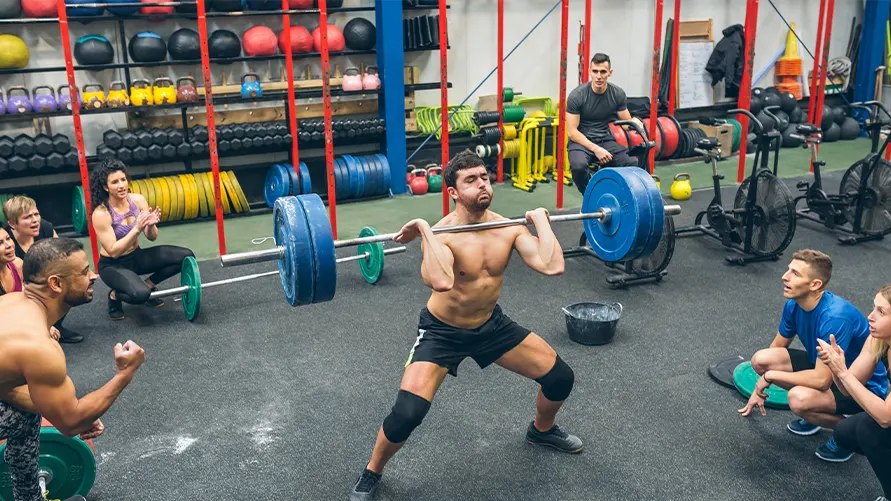You just signed up a new member.
They are pumped. You are pumped. It is a win-win, until it is not.
Because if you do not know who just walked through your door, you are flying blind. Maybe they have a bad knee, a heart condition, or a fear of free weights. And without asking the right questions, you could be setting them in and your business up for failure.
It is not about liability forms or paperwork checklists. This is about creating a smarter, safer, more personalized experience from day one. The difference between a three-month churn and a lifelong client starts with what you ask.
It starts with creating the perfect personal fitness questionnaires for your new clients. Remember, a great fitness journey is possible when you know your clients from day one. And having digital forms online makes the process even simpler, safer, and more accessible.
So, here are the questions you need to ask every new member. Use those responses to gain insights into creating safer training and better outcomes.
Why most studios get this wrong
Here is how it usually goes. A new member joins. You hand them a clipboard with a basic waiver. They scribble in a few lines. You file it away and never look at it again.
That is a wasted opportunity.
That form is not just a legal step, it is your entry point to:
- Spotting health risks before they become injuries.
- Crafting workouts that hit personal goals.
- Understanding each member’s emotional motivators.
- Building trust from the very first session.
When you do not ask the right questions, or worse, ask too many, you overwhelm the member and miss key details that would have made their training effective.
25 must-ask questions to ask in your questionnaire form
When creating a personal training client questionnaire, keep the questions categorized into each section. So, you do not just gather information but also gain insights into each section and improve gym members’ experience.
Here is how you do it:
Section 1: Personal information (the basics)
The obvious details you need are:
- Full name & preferred nickname
- Date of birth (age impact programming)
- Gender (male, female, and prefer not to say)
- Contact info & email (ask for emergency contact too)
- How did they hear about your fitness studio? (marketing intel)
Section 2: Health & safety (the non-negotiables)
This section protects your member and your business. Ask.
- Has a doctor ever advised against exercise?
- List any current injuries or chronic pain.
- Are you taking any medications?
- Do you have any heart conditions, diabetes, or asthma?
- Do you feel dizziness or chest pain during exercise?
Sometimes, injuries in fitness studios stem from pre-existing conditions. Therefore, asking these questions gives you a clear safety baseline and reduces your risk of emergencies or lawsuits.
Section 3: Fitness goals (the member’s “Why”)
Do not assume their goal is fat loss. Ask.
- What is your #1 reason for joining?
- Have you worked with a personal trainer in the past?
- What are your long-term and short-term fitness goals?
- How many days a week can you commit to training?
- Have you tried other fitness centers? If yes, why did they not work?
- How will you measure success?
Tip: General goals like “get toned up” won’t help. Ask for specifics. “Fit into size 8 jeans” or “Do 5 pull-ups” give you something to build around. When they feel progress, they will stick around longer.
Section 4: Exercise history (know what you are working with)
Start where they are, not where you want them to be.
- What is your current workout routine?
- What equipment have you used already?
- What is your best and worst fitness experience? Share if any.
- Do you prefer group coaching or working solo?
- What is your workout deal-breaker?
Insight: Knowing that someone hates running or avoids deadlifts helps you tailor a plan they will follow wholeheartedly. So there is no guessing, just right results.
Section 5: Lifestyle factors (the secret sauce)
Fitness does not happen alone in a vacuum. It comes with lifestyle changes too. For wholesome results, it is vital to know the client’s lifestyle. So, ask:
- What is your daily step count?
- How many hours do you sleep nightly?
- On a scale of 1-10, how high is your stress level? (1=lowest, 10=highest stress levels)
- What do you typically eat for breakfast, lunch, and dinner? (food preferences)
- Do you drink alcohol or use tobacco?
- What is one commitment each week you can’t miss?
Reality check: Poor sleep and high stress crush progress. You need to know what your members are battling outside the facility if you are going to help them inside it.
Digitize the questionnaires
A big list of questions might feel like overkill. But when you do it right, members feel seen, not interrogated. Here is how you can keep it smooth using fitness studio management software.
Professionally built fitness studio software has a built-in digital form feature that allows you to create sign-up forms, waivers, and consent forms online. This means you can:
- Sync information with member profiles.
- Trigger alerts for injuries or health risks.
- Auto-update as members grow.
- Eliminate paperwork and human errors.
Studios that use digital forms usually have better customer experience and ultimately higher retention rates. So, it not just about having software, but also about operational efficiency.
You have collected the responses. What is next?
Collecting the answers is not enough. You have to use them, too. Follow-ups are the biggest thing to be thankful for. Understand it this way.
First session: The trainer highlights the form, saying, “I saw you mentioned back pain. Do we need to modify anything if needed?’
Week 2: Ask about one lifestyle factor: “How is your sleep cycle this week?”
Month 1: Check progress on a specific goal. Asking, “You said you wanted to do 10 push-ups. Let’s test that today.”
Following up on your members’ show that just do not train, you listen, and you care. Doing so, you can build trust, motivate when needed and win them for a longer time.
What if you ignore this?
For a fitness studio, overlooking these personal fitness questionnaires is like losing your business to a lawsuit. A slight mistake can cost your fitness studio’s reputation. Keeping questionnaires is paramount. Studio owners who skip client questionnaires risk:
- Training someone into an injury.
- Losing them when workouts feel meaningless.
- Facing a lawsuit in case of negligence.
- Getting bad reviews from your clients.
- Losing members due to poor experience.
Since training involves care and precision, having digital forms keeps everything accessible and personalized for members.
Your action plan
Here is how you can build rapport to avoid lawsuits or inconvenience. Gain insights while keeping the fitness journeys on the right track.
Today: Audit your newly enrolled members form. See if all the questions are answered.
This week: Save and update forms and make sure trainers can access the forms.
Next 30 days: Ensure the training program and instructor align with specified fitness goals.
Final words
Your personal fitness questionnaire form is not a formality. Consider this your responsibility for coaching sessions. It helps you understand your members’ needs, expectations, and special requirements. Best of all, it clearly shows that you care, listen, and support. That is what boosts their experiences and makes them stay longer with your fitness studio.
Want fully built fitness studio management software that includes digital forms? Explore Wellyx digital forms. They will save you time and money and prevent emergencies and lawsuits.





